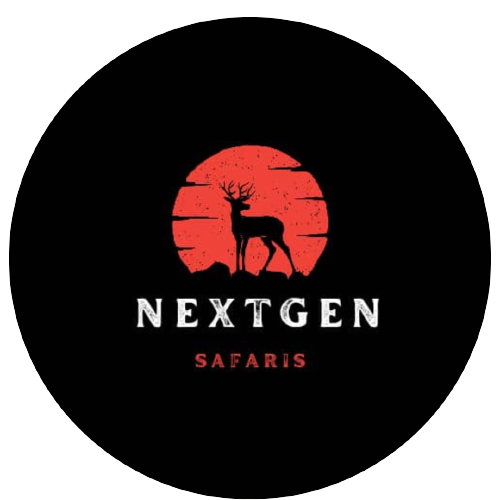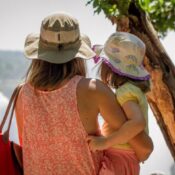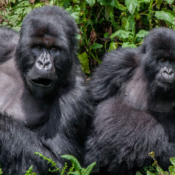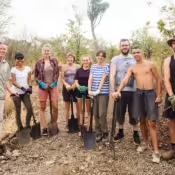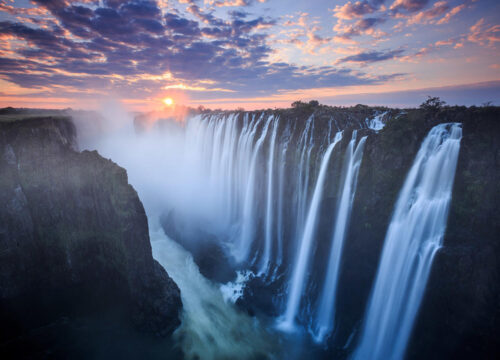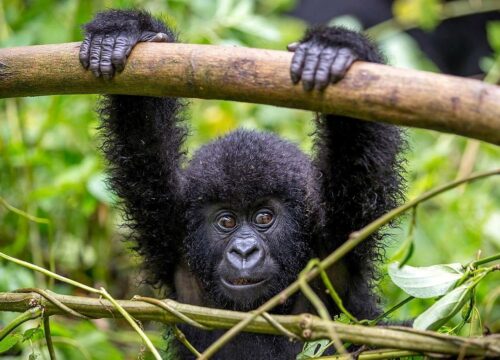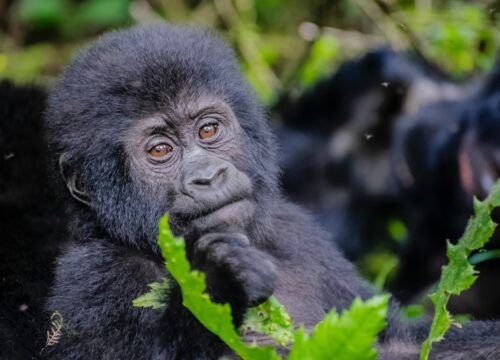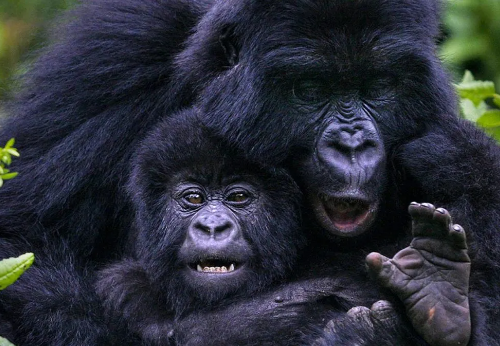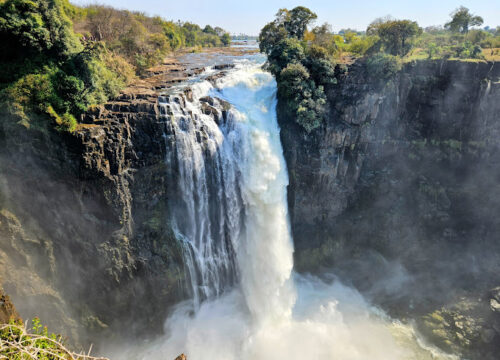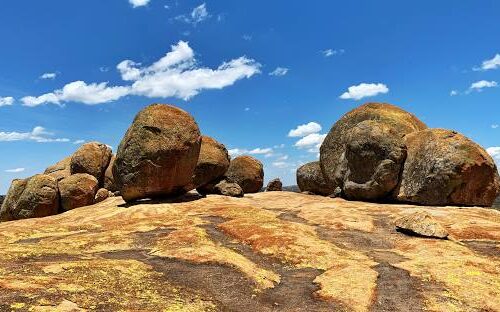Kgalagadi Transfrontier Park
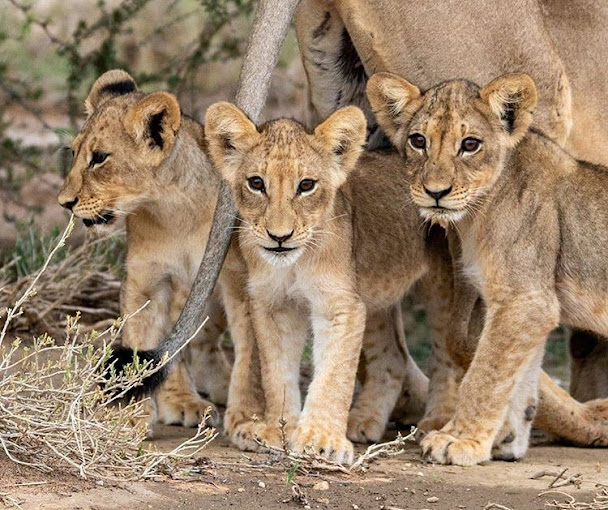

Kgalagadi Transfrontier Park is a merger of Kalahari Gemsbok National Park in South Africa and Gemsbok National Park in Botswana. Most tourism happens on the South Africa side, which has excellent facilities. The Botswana side only has very basic campsites. The red sand dunes in the inhospitable desert form a magnificent backdrop for wildlife viewing and photography.
Kgalagadi Transfrontier Park Pros & Cons
- Excellent wildlife viewing
- Stunning desert scenery and great photographic opportunities
- Great birding, especially raptors
- Off-the-beaten-track destination with great wilderness appeal
- Upmarket lodge and self-catering accommodation (South Africa)
- Less variety of animals than in savannah reserves
- Far away from South Africa’s main tourist attractions
- Very hot conditions
Wildlife Highlights
Kgalagadi is famous for its big, black-maned Kalahari lions. Cute ground squirrels pop in and out of their burrows in the rest camps, and the nocturnal springhare is another animal that thrives in the sandy environment. The big cats are quite easily seen. Bat-eared fox and brown hyena are two of the smaller predators you might see, and very lucky visitors might come across the elusive pangolin.
Best Time for Wildlife Viewing
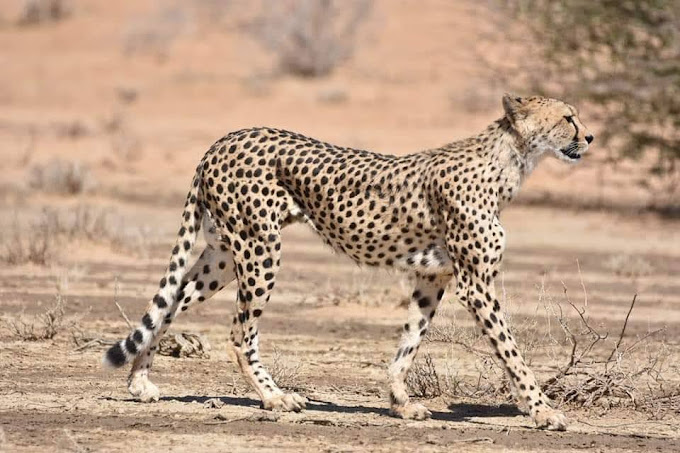
The best time for wildlife viewing in Kgalagadi is toward the end of the Wet season, roughly from March to May, when animals gather in the riverbeds. However, many might prefer the cooler winter months of May to September and, as a rule, wildlife viewing is good throughout the year. The summer months from October to April are very hot.
Birds
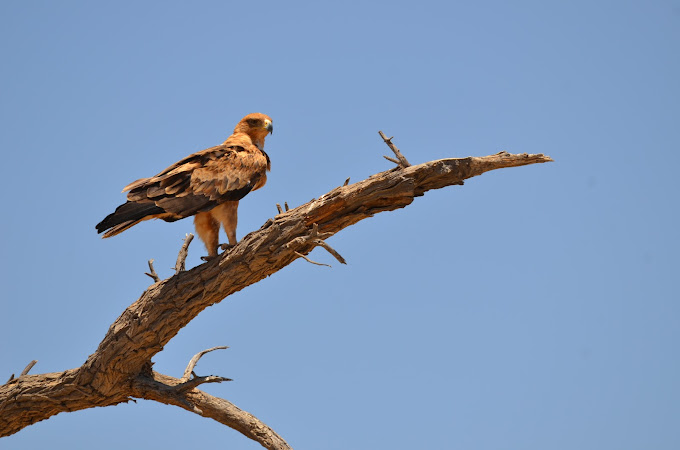
Kgalagadi Transfrontier Park has an impressive bird checklist of just over 300 species, but only 102 of those are resident. The park is renowned for its birds of prey, with 46 species recorded. Some of the raptors you can expect to see are black-chested snake eagle, bateleur, white-backed and lappet-faced vulture and tawny eagle. Sociable weavers often share their enormous nests with pygmy falcons. Migratory birds are present from November to April.
Weather & Climate
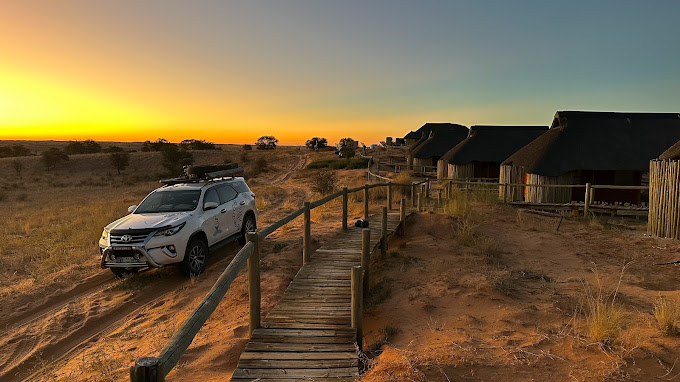
Kgalagadi Transfrontier Park lies in a semi-arid region with an average rainfall of 150mm/5.9in in the southwest to 350mm/13.8in in the northeast. It has its winter and summer at opposite times than in Europe and North America. The park lies in a summer rainfall area, and sporadic rain occurs from October to April. There is a strong contrast in day and night temperatures.
Getting There
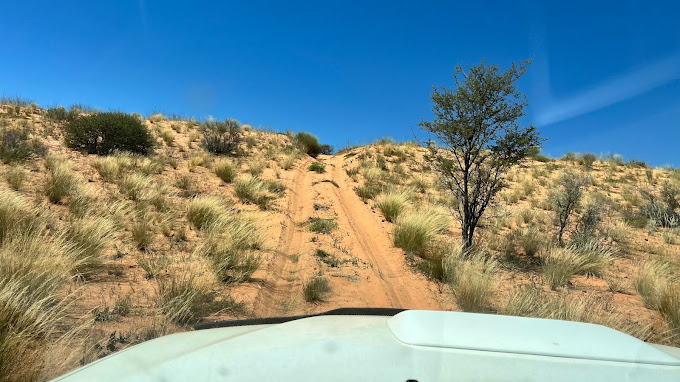
The Kgalagadi Transfrontier Park is mostly a self-drive destination. It spans two countries: South Africa and Botswana. Except for some basic campsites, there are no facilities on the Botswana side, and most visitors go to the South Africa side of the park.
South Africa Side

O.R. Tambo International Airport (JNB) in Johannesburg is where most visitors will arrive when visiting South Africa. Kgalagadi is located approximately 904km/584mi from Johannesburg. It is possible to rent a car in Johannesburg and drive from there, or you could take a connecting flight to Upington Airport (UTN). The distance from Upington to Kgalagadi is 250km/124mi and the drive takes about 2½ hours*.
There are two entrance gates on the South Africa side. The first is the Twee Rivieren Gate in the south, which acts as a border post with the Two Rivers Gate on the Botswana side. The second is the Mata-Mata Gate, which can be entered from Namibia. Airstrips for charter flights are available at Twee Rivieren and Nossob Camp, and hire cars can be collected at Twee Rivieren if prior arrangements are made with a car rental company.
Most of the roads in the South African part of the park are accessible with an ordinary car, but high clearance (SUV or pickup type vehicle) is preferred. Even then, it is possible to get stuck on the sandy roads, so some people might choose to play it safe and hire a 4×4.
Botswana Side
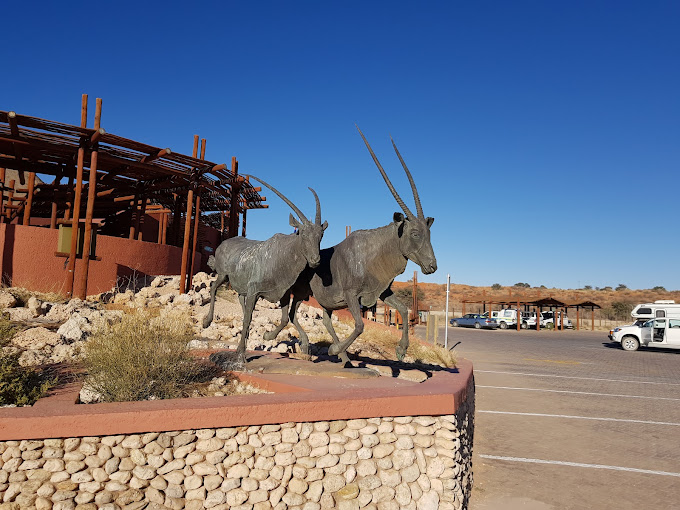
Adventurous 4×4 drivers visiting the Botswana side of the park still mostly come from the South Africa side. The Botswana side is accessible by 4×4 only. Visiting here should only be attempted as part of an organized tour or by someone who has a great deal of experience with totally self-sufficient safaris. To enter the Botswana side, a convoy of at least two vehicles is required. Campsites and routes must be booked in advance. There is no visa required if you return through the same gate that you came from.
If you are entering Kgalagadi from Botswana, you can fly to Sir Seretse Khama International Airport (GBE), just outside the capital city of Gaborone. From Gaborone, you can drive to the Mabuasehube Gate using a 4×4 vehicle. The drive is about 530km/329mi and takes at least 12 hours*. Another option is to arrange a charter flight to Tshabong and drive from there (115km/71mi).
If your Botswana safari starts by visiting the more popular northern parks, you will most likely have a stopover at O.R. Tambo International Airport (JNB) in Johannesburg, South Africa. From there you can fly to Maun Airport (MUB) or Kasane Airport (BBK), depending on which park you will visit first. When coming from the north, you can enter Kgalagadi through the Kaa Gate, which is 376km/234mi from Ghanzi and 797km/495mi from Maun. A 4×4 vehicle is required. There is also an option to fly from Maun or Kasane to the airstrip near Ghanzi or Tshabong by small charter aircraft and drive from there.
Malaria & Safety
Kgalagadi Transfrontier Park is virtually crime-free and, in our opinion, a safe destination. Although organized tours are available, this is also a popular self-drive destination. Most of the roads on the South African side are accessible with an ordinary car, but an SUV or pickup is preferred. Even then, it is still possible to get stuck on the sandy roads, so renting a 4×4 is a good idea. Visiting the Botswana side should only be attempted as part of an organized tour or by visitors with a great deal of experience in self-sufficient safaris.
Malaria & Vaccinations
Antimalarial aren’t necessary in Kgalagadi. Malaria is only a concern if you combine Kgalagadi with the northeastern part of South Africa (including Kruger) or the far north of Botswana. It is advisable you get several vaccinations before you travel to either South Africa or Botswana (consult your nearest travel clinic).
Wildlife Viewing
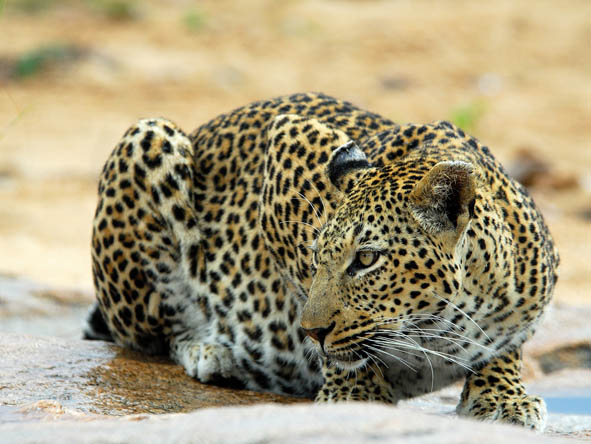
Wildlife viewing in Kgalagadi is generally very safe as long as you obey the instructions given by your guide. Self-drive visitors should familiarize themselves with the rules of the park. You might also want to read the ‘Wildlife Viewing Safety Precautions’ below for more tips.
Want To Visit Kgalagadi TP?
INQUIRE NOW
GENERAL INFORMATION ON A SOUTH AFRICA SAFARI
ENTRY REQUIREMENTS:
All visitors to South Africa must have a valid passport with at least 4 consecutive blanks pages. Any applicable visa and/or relevant documentation are the responsibility of the traveller. For further information on Visa requirements visitors are advised to contact their nearest South African Embassy or Consulate.
LANGUAGE:English
TIME: GMT +3
VOLTAGE: 220 Volts/AC50Hz. Sockets are UK style, 3 pin square plugs. Power is from the government in the city/major towns and generator with inverter back up in the Safari Lodges and Camps.
CURRENCY: Foreign currency must be changed at the Bank, Bureau de Change, and Hotel/Safari lodge/Camp/Resort. Major Credit Cards, Master card, Visa, American Express, are usually accepted throughout the country. Where credit cards are accepted, the payment will normally be recorded in US$ regardless of the card’s default currency.
CLOTHING: Dress is mainly informal and should be comfortable as well as practical. Something warm should be brought along for early morning and evenings. Safari clothes are available from hotels/lodges/camps.
BAGGAGE: Where possible, travel light. Baggage space on safari is limited to medium suitcase or soft bag per person plus reasonable amount of hand luggage. There is 15 Kilogram per person limit on all flights to the wildlife sanctuaries. Excess luggage must be stored in your arrival hotel.
WATER: You will find many different of opinion of what is safe and what is not. We recommend for peace of mind, to drink local Bottled Mineral water. It is important to drink plenty of water especially during the hotter months. We would recommend that guests drink at least 2 to 3 liters of water per day to limit the effects of dehydration.
HEALTH; East Africa is a safe and secure destination; however, it is a good idea to take a few precautions. Kindly consult your GP or local doctor at least 6 weeks before you travel, with regards: Malaria prophylactics. East Africa is a known malaria area and preventive measures are essential. You are advised to take one of the recommended anti-malarial drugs. Be sure to wear long sleeved shorts and trousers after sunset and spray the exposed parts of your body with a mosquito repellent spray Remember to protect yourself from direct sun rays with sunscreen cream or safari hat.
DIETARY REQUIREMENTS: For those guests with specific dietary requirement, please ensure we are notified prior to travel
GRATUITIES: As a guideline and dependent on how happy you are, we would suggest the following: The General Hotel/Lodge/Camp Staff – Approximately U$ 10.00 per person per day Driver Guides – Approximately US$ 15.00 to US$ 20.00 per person per day.
PHOTOGRAPHY: Please be careful when photographing public buildings, airports, bridges, the national flag and people in uniform. Ensure that you have sought permission before photographing local people and their villages. If in doubt, please check with your guide.
-
Book a Customized Safari
Read about
10 Things you Should NOT DO on an African Safari.
What to expect on a safari in Uganda.
Bwindi Impenetrable National Park
How to Choose the Best Tour Operate for Your Safari in Africa
12-Day Gorilla Tracking in Bwindi
Some of our Gorilla and wildlife Safaris
1 Day Jinja Ultimate tour Experience
1 Day White Water Rafting in Jinja
3 Days Bwindi Gorilla Habituation via Rwanda
3 Day Birding Safaris and Photography in Uganda
3 Day Safari to Queen Elizabeth National Park
3 Day fly in Gorilla Trekking Safari from Masai Mara
3 Day Grand Gorilla Trekking Safari
4 Day Chimpanzee and Gorilla Trekking Safari
Recent Posts
One-Way Trip from the UK to Victoria Falls
One-Way Trip from the UK to Uganda
Tours for Groups and Families at Victoria Falls
Conservation Programs for Local Wildlife at Victoria Falls
Quick booking process
+256781282344
+256755922154
